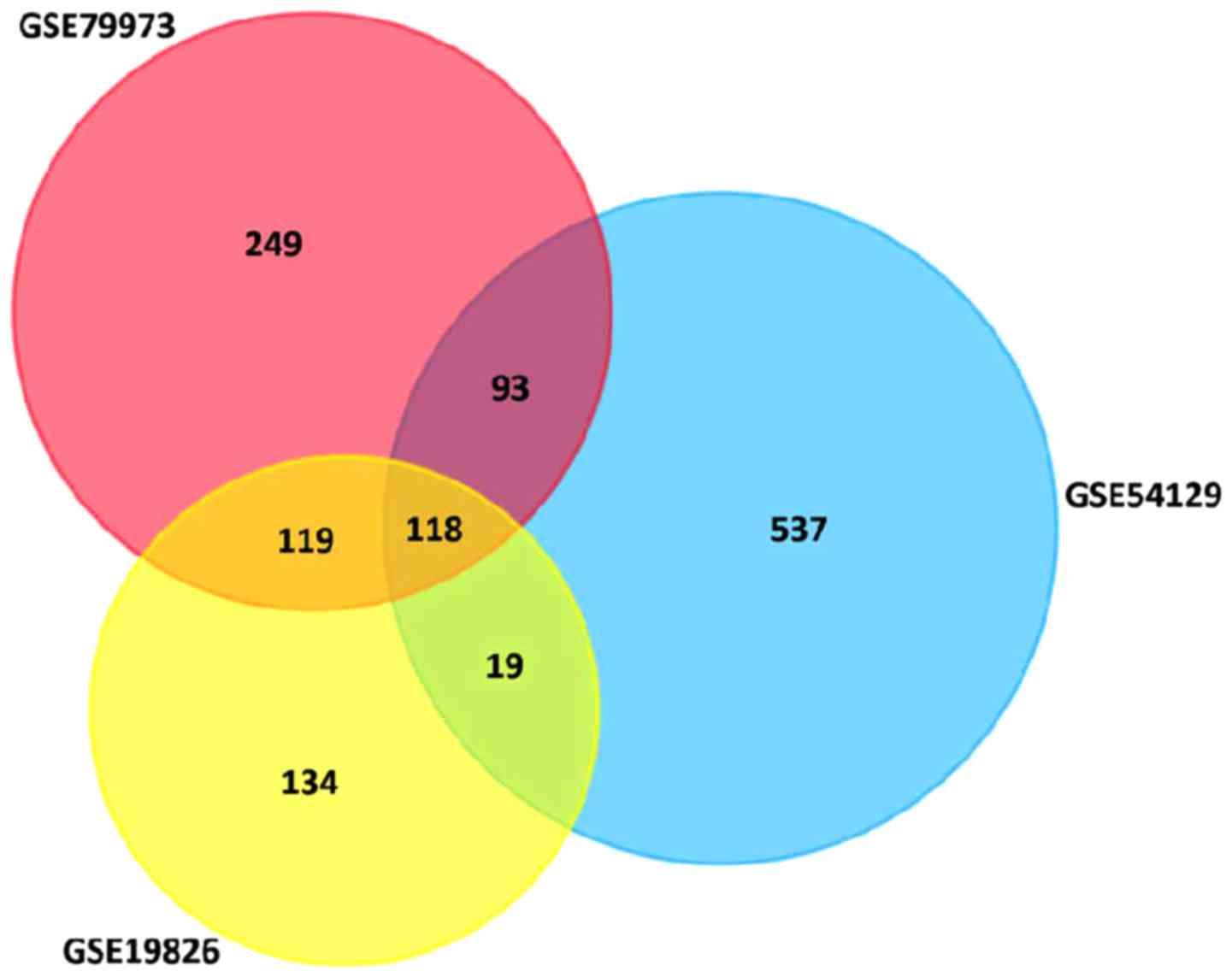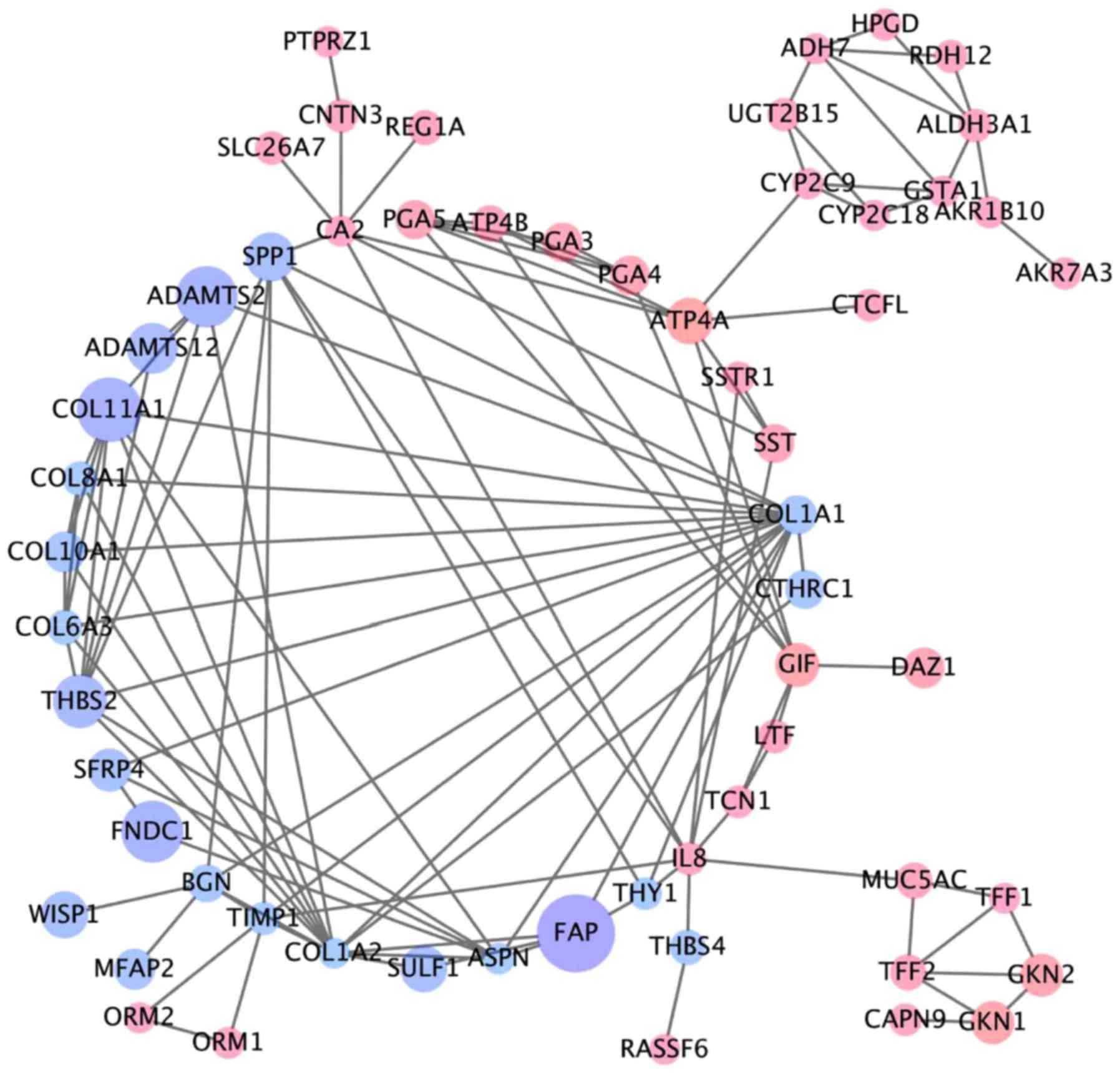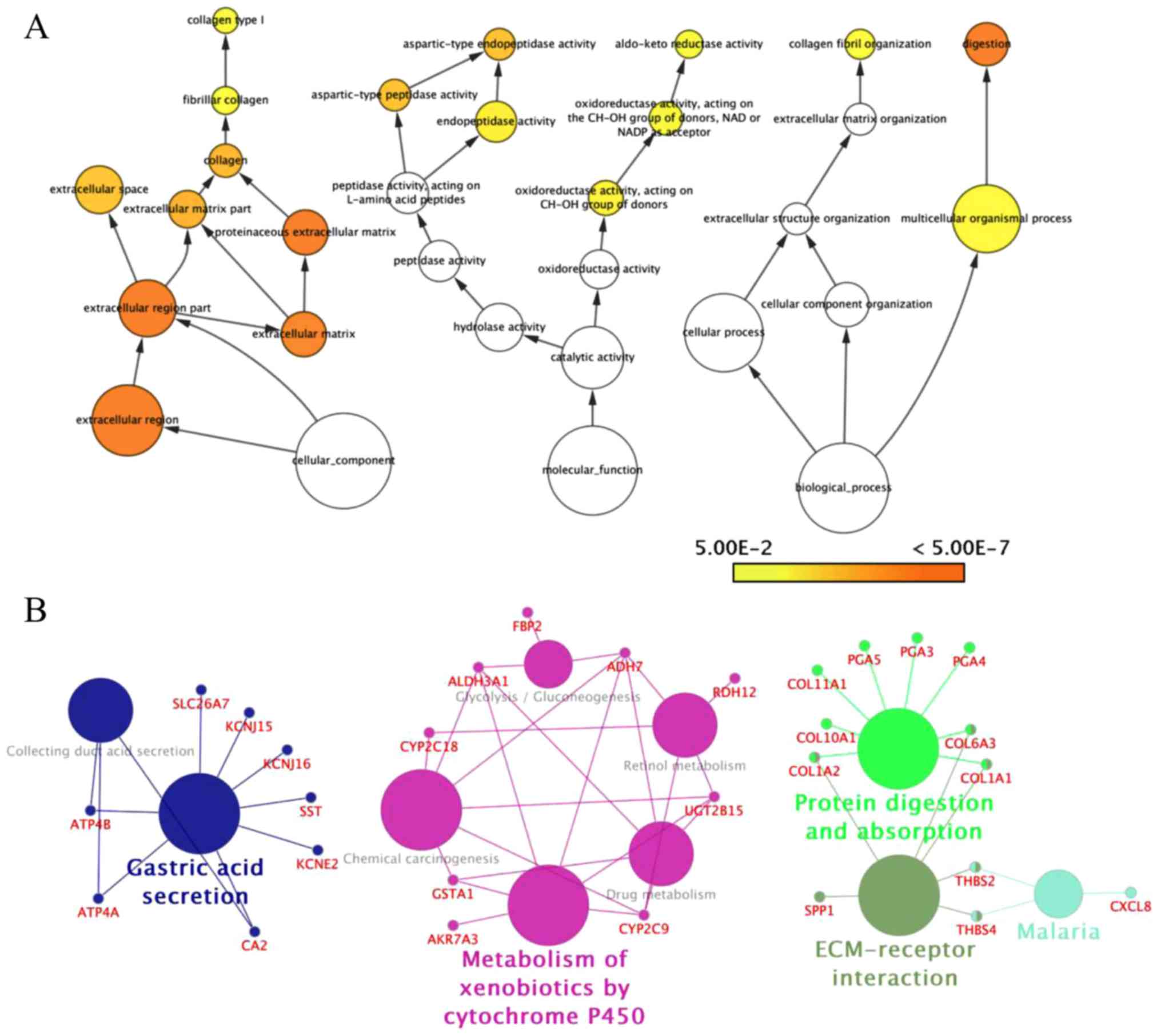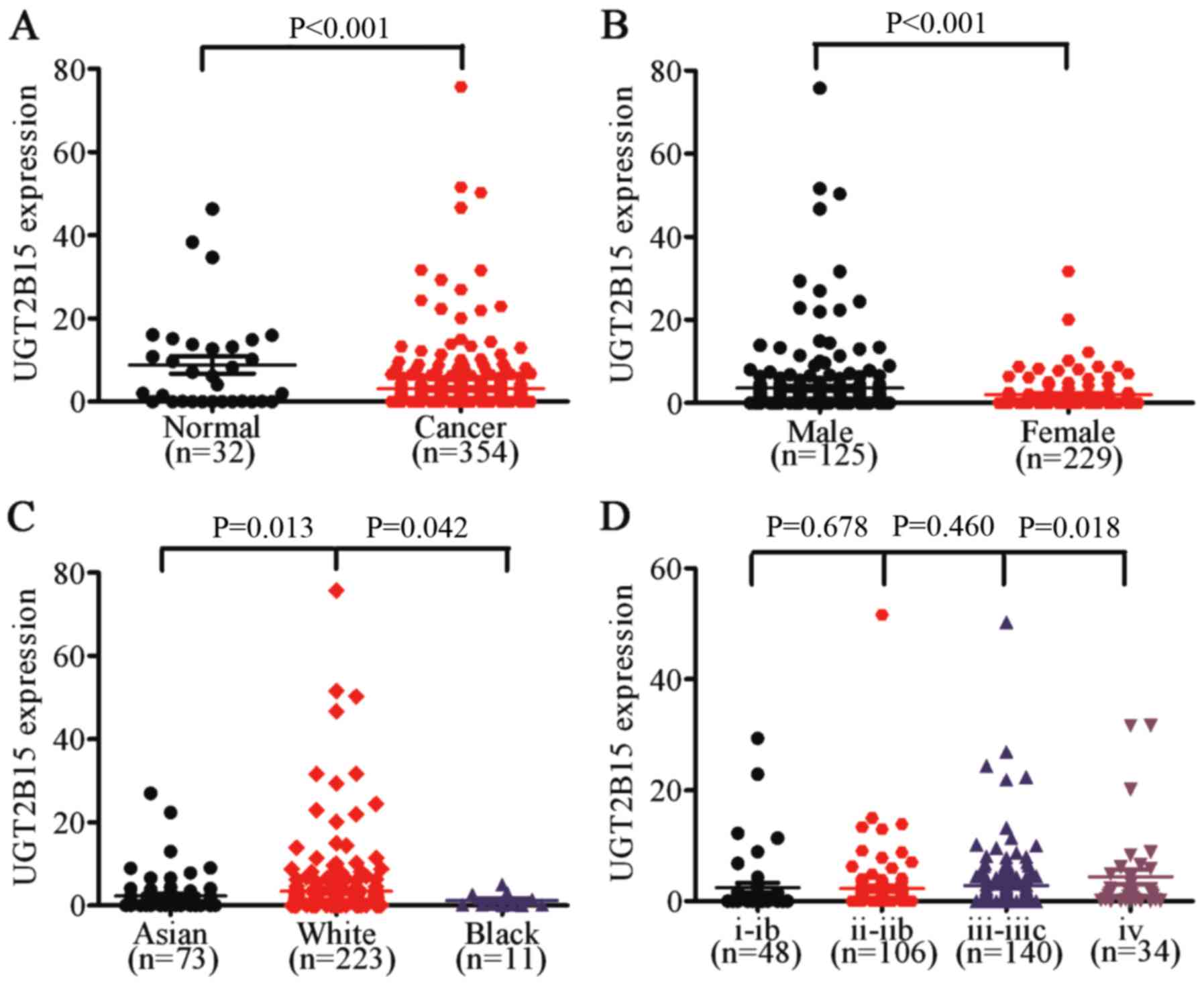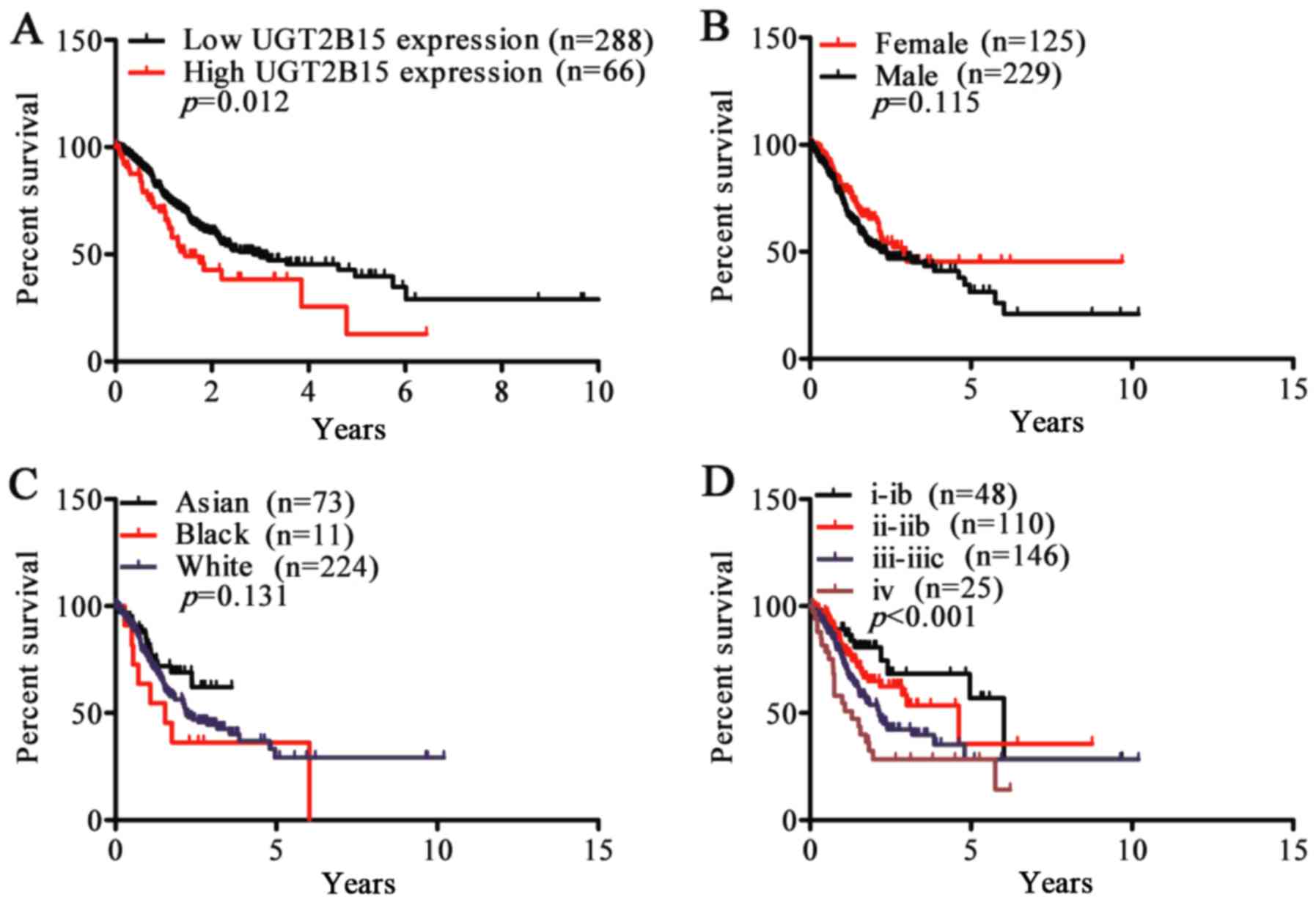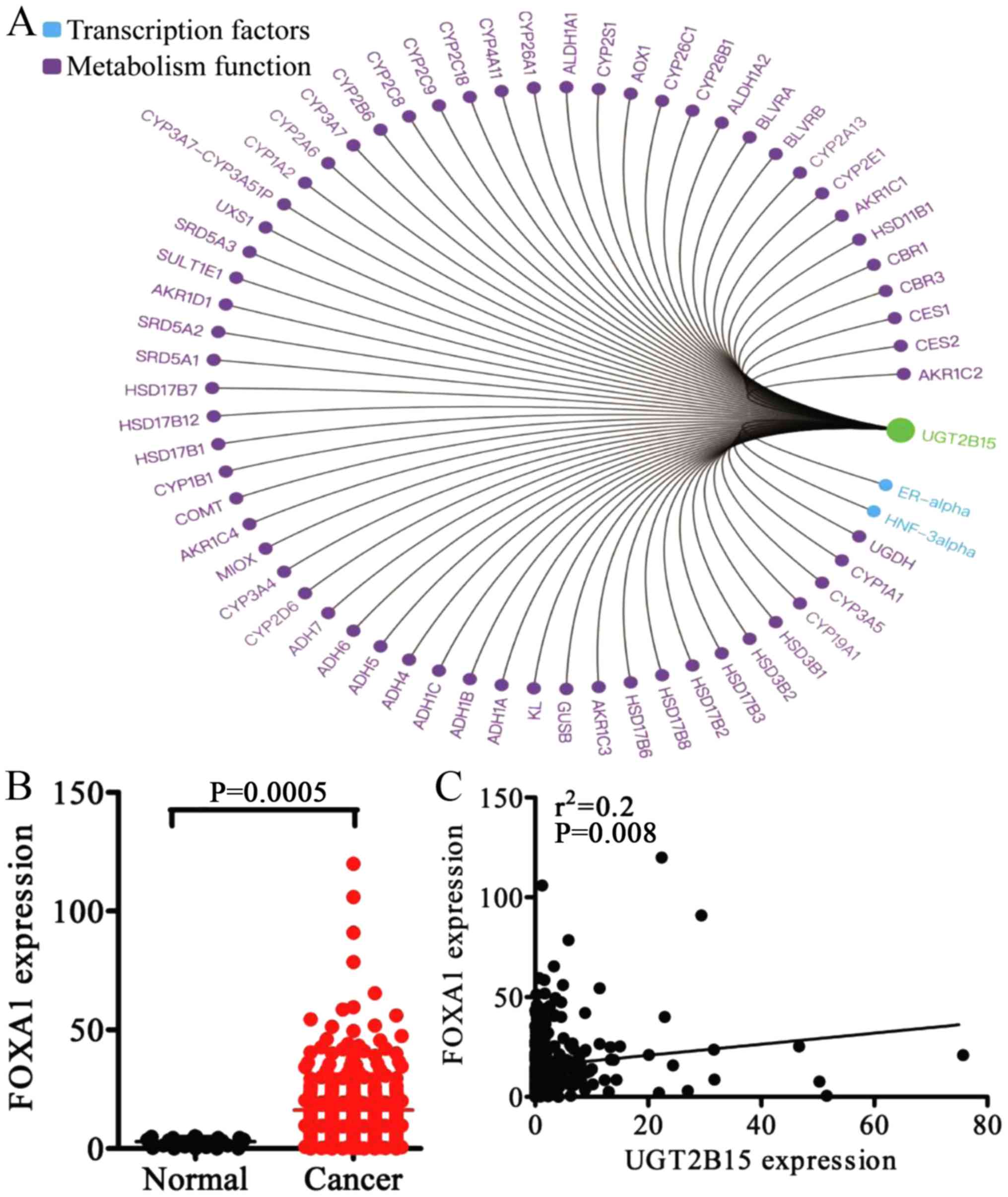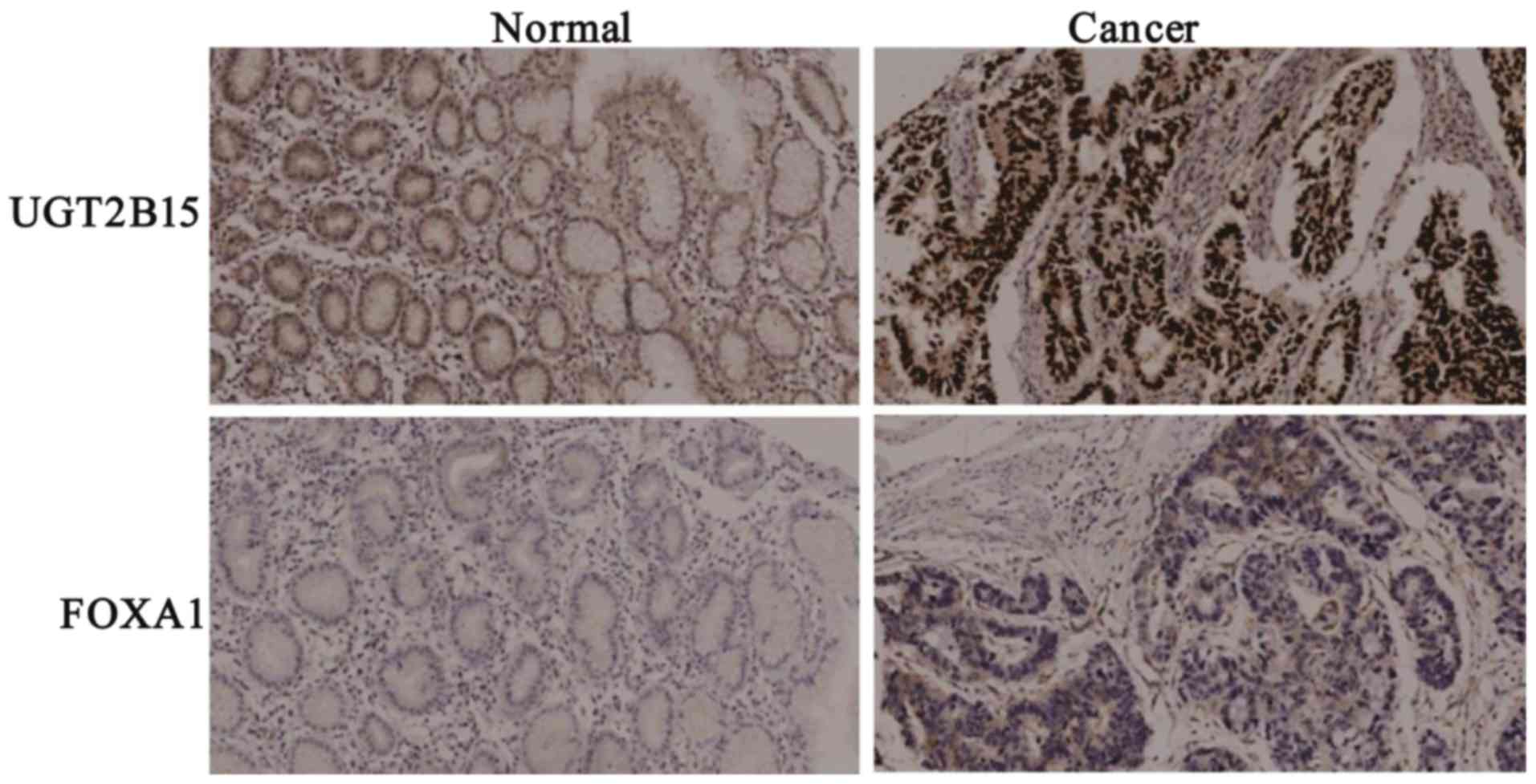|
1
|
Torre LA, Bray F, Siegel RL, Ferlay J,
Lortet-Tieulent J and Jemal A: Global cancer statistics, 2012. CA
Cancer J Clin. 65:87–108. 2015. View Article : Google Scholar : PubMed/NCBI
|
|
2
|
Yan C, Zhu M, Huang T, Yu F and Jin G:
Genome-wide association studies identified loci contribute to
phenotypic variance of gastric cancer. Gut. 2017.
|
|
3
|
Huang LY, Wang X, Cui XF, Li H, Zhao J, Wu
CC, Min L, Zhou Z, Wan L, Wang YP, et al: IRTKS is correlated with
progression and survival time of patients with gastric cancer. Gut.
2017.
|
|
4
|
Zhang X and Xu W: Neutrophils diminish
T-cell immunity to foster gastric cancer progression: The role of
GM-CSF/PD-L1/PD-1 signalling pathway. Gut. 66:1878–1880. 2017.
View Article : Google Scholar : PubMed/NCBI
|
|
5
|
Gan L, Meng J, Xu M, Liu M, Qi Y, Tan C,
Wang Y, Zhang P, Weng W, Sheng W, et al: Extracellular matrix
protein 1 promotes cell metastasis and glucose metabolism by
inducing integrin beta4/FAK/SOX2/HIF-1alpha signaling pathway in
gastric cancer. Oncogene. 37:744–755. 2017. View Article : Google Scholar : PubMed/NCBI
|
|
6
|
Brower V: Apatinib in treatment of
refractory gastric cancer. Lancet Oncol. 17:e1372016. View Article : Google Scholar : PubMed/NCBI
|
|
7
|
Bang YJ, Im SA, Lee KW, Cho JY, Song EK,
Lee KH, Kim YH, Park JO, Chun HG, Zang DY, et al: Randomized,
double-blind phase II trial with prospective classification by ATM
protein level to evaluate the efficacy and tolerability of olaparib
plus paclitaxel in patients with recurrent or metastatic gastric
cancer. J Clin Oncol. 33:3858–3865. 2015. View Article : Google Scholar : PubMed/NCBI
|
|
8
|
Reyna DE, Garner TP, Lopez A, Kopp F,
Choudhary GS, Sridharan A, Narayanagari SR, Mitchell K, Dong B,
Bartholdy BA, et al: Direct activation of BAX by BTSA1 overcomes
apoptosis resistance in acute myeloid leukemia. Cancer Cell.
32:490–505. 2017. View Article : Google Scholar : PubMed/NCBI
|
|
9
|
Buttner R, Gosney JR, Skov BG, Adam J,
Motoi N, Bloom KJ, Dietel M, Longshore JW, Lopez-Rios F,
Penault-Llorca F, et al: Programmed death-ligand 1
immunohistochemistry testing: A review of analytical assays and
clinical implementation in non-small-cell lung cancer. J Clin
Oncol. 35:3867–3876. 2017. View Article : Google Scholar : PubMed/NCBI
|
|
10
|
Ge W, Zhao K, Wang X, Li H, Yu M, He M,
Xue X, Zhu Y, Zhang C, Cheng Y, et al: iASPP is an antioxidative
factor and drives cancer growth and drug resistance by competing
with Nrf2 for keap1 binding. Cancer Cell. 32:561–573. 2017.
View Article : Google Scholar : PubMed/NCBI
|
|
11
|
Sidaway P: Breast cancer: LAG3 expression
indicates favourable outcomes. Nat Rev Clin Oncol. 14:7122017.
View Article : Google Scholar
|
|
12
|
Shou Z, Jin X, He X, Zhao Z, Chen Y, Ye M
and Yao J: Overexpression of Musashi-1 protein is associated with
progression and poor prognosis of gastric cancer. Oncol Lett.
13:3556–3566. 2017. View Article : Google Scholar : PubMed/NCBI
|
|
13
|
Shimada Y, Okumura T, Sekine S, Moriyama
M, Sawada S, Matsui K, Yoshioka I, Hojo S, Yoshida T, Nagata T, et
al: Expression analysis of iPS cell-inductive genes in esophageal
squamous cell carcinoma by tissue microarray. Anticancer Res.
32:5507–5514. 2012.PubMed/NCBI
|
|
14
|
Hippo Y, Taniguchi H, Tsutsumi S, Machida
N, Chong JM, Fukayama M, Kodama T and Aburatani H: Global gene
expression analysis of gastric cancer by oligonucleotide
microarrays. Cancer Res. 62:233–240. 2002.PubMed/NCBI
|
|
15
|
Vendrell JA, Thollet A, Nguyen NT, Ghayad
SE, Vinot S, Bieche I, Grisard E, Josserand V, Coll JL, Roux P, et
al: ZNF217 is a marker of poor prognosis in breast cancer that
drives epithelial-mesenchymal transition and invasion. Cancer Res.
72:3593–3606. 2012. View Article : Google Scholar : PubMed/NCBI
|
|
16
|
Sun Y, Zheng S, Torossian A, Speirs CK,
Schleicher S, Giacalone NJ, Carbone DP, Zhao Z and Lu B: Role of
insulin-like growth factor-1 signaling pathway in
cisplatin-resistant lung cancer cells. Int J Radiat Oncol Biol
Phys. 82:e563–572. 2012. View Article : Google Scholar : PubMed/NCBI
|
|
17
|
Budhu A, Forgues M, Ye QH, Jia HL, He P,
Zanetti KA, Kammula US, Chen Y, Qin LX, Tang ZY and Wang XW:
Prediction of venous metastases, recurrence, and prognosis in
hepatocellular carcinoma based on a unique immune response
signature of the liver microenvironment. Cancer Cell. 10:99–111.
2006. View Article : Google Scholar : PubMed/NCBI
|
|
18
|
Hu DG, Selth LA, Tarulli GA, Meech R,
Wijayakumara D, Chanawong A, Russell R, Caldas C, Robinson JL,
Carroll JS, et al: Androgen and estrogen receptors in breast cancer
coregulate human UDP-glucuronosyltransferases 2B15 and 2B17. Cancer
Res. 76:5881–5893. 2016. View Article : Google Scholar : PubMed/NCBI
|
|
19
|
Grosse L, Paquet S, Caron P, Fazli L,
Rennie PS, Belanger A and Barbier O: Androgen glucuronidation: An
unexpected target for androgen deprivation therapy, with prognosis
and diagnostic implications. Cancer Res. 73:6963–6971. 2013.
View Article : Google Scholar : PubMed/NCBI
|
|
20
|
Hwang MS, Lee SJ, Kim WY, Jeong HE and
Shin JG: Genetic variations in UDP-glucuronosyltransferase 2B15 in
a Korean population. Drug Metab Pharmacokinet. 29:105–109. 2013.
View Article : Google Scholar : PubMed/NCBI
|
|
21
|
Pfeiffer MJ, Smit FP, Sedelaar JP and
Schalken JA: Steroidogenic enzymes and stem cell markers are
upregulated during androgen deprivation in prostate cancer. Mol
Med. 17:657–664. 2011. View Article : Google Scholar : PubMed/NCBI
|
|
22
|
Sutiman N, Lim JS, Muerdter TE, Singh O,
Cheung YB, Ng RC, Yap YS, Wong NS, Ang PC, Dent R, et al:
Pharmacogenetics of UGT1A4, UGT2B7 and UGT2B15 and their influence
on Tamoxifen disposition in Asian breast cancer patients. Clin
Pharmacokinet. 55:1239–1250. 2016. View Article : Google Scholar : PubMed/NCBI
|
|
23
|
Wang LL, Xiu YL, Chen X, Sun KX, Chen S,
Wu DD, Liu BL and Zhao Y: The transcription factor FOXA1 induces
epithelial ovarian cancer tumorigenesis and progression. Tumour
Biol. 39:10104283177062102017.PubMed/NCBI
|
|
24
|
Davis DG, Siddiqui MT, Oprea-Ilies G,
Stevens K, Osunkoya AO, Cohen C and Li XB: GATA-3 and FOXA1
expression is useful to differentiate breast carcinoma from other
carcinomas. Hum Pathol. 47:26–31. 2016. View Article : Google Scholar : PubMed/NCBI
|
|
25
|
Ren H, Zhang P, Tang Y, Wu M and Zhang W:
Forkhead box protein A1 is a prognostic predictor and promotes
tumor growth of gastric cancer. Onco Targets Ther. 8:3029–3039.
2015.PubMed/NCBI
|















